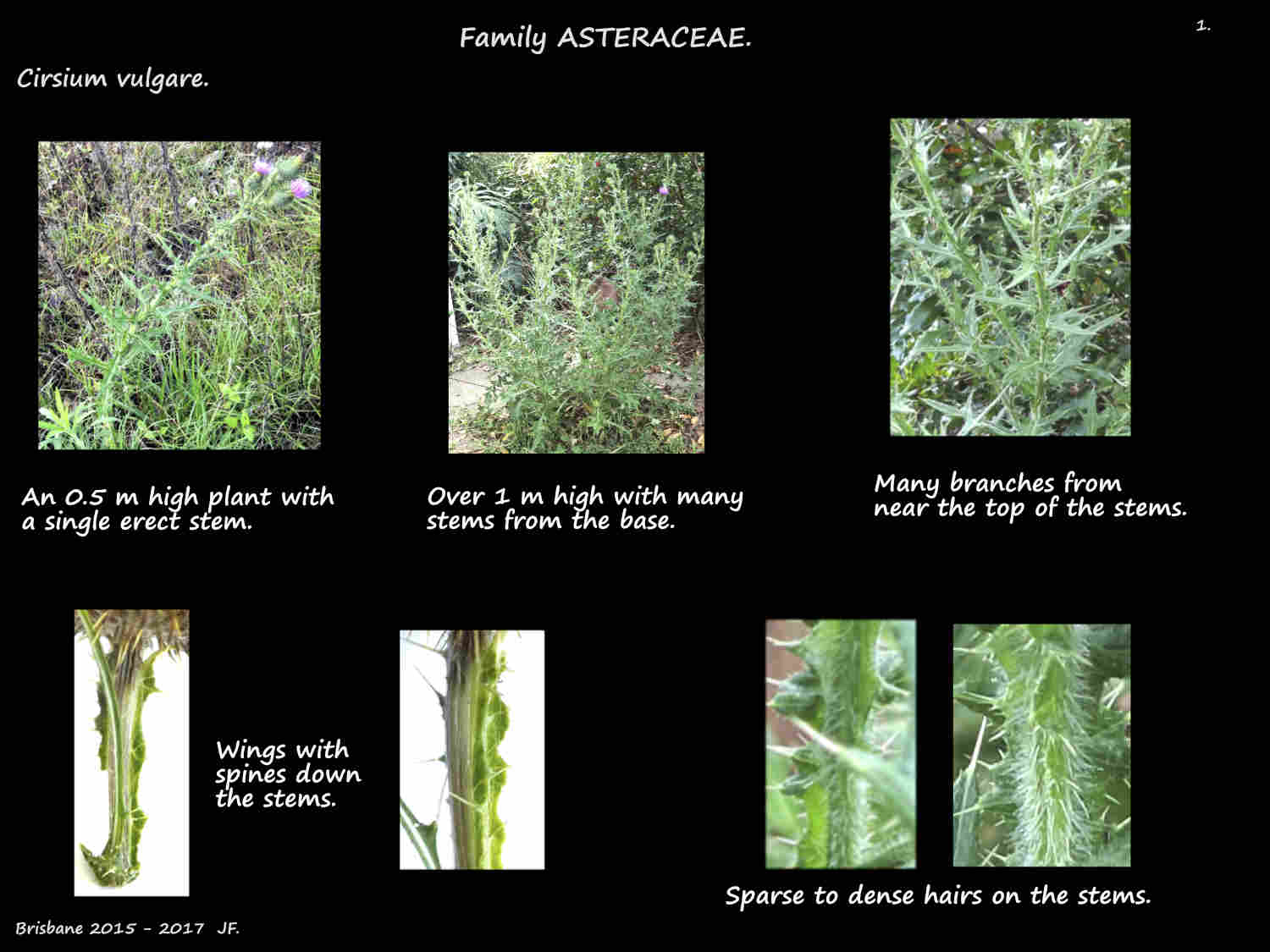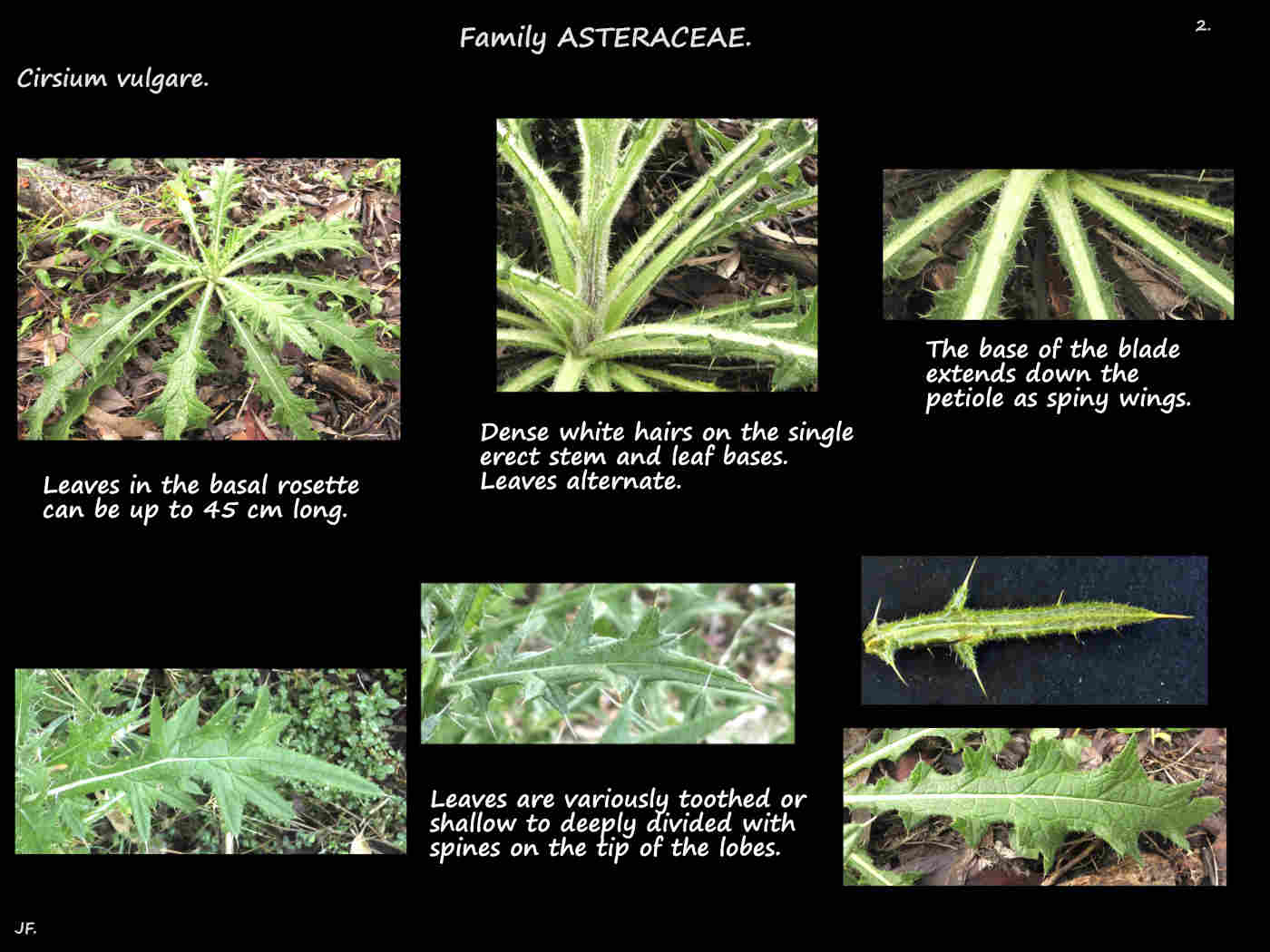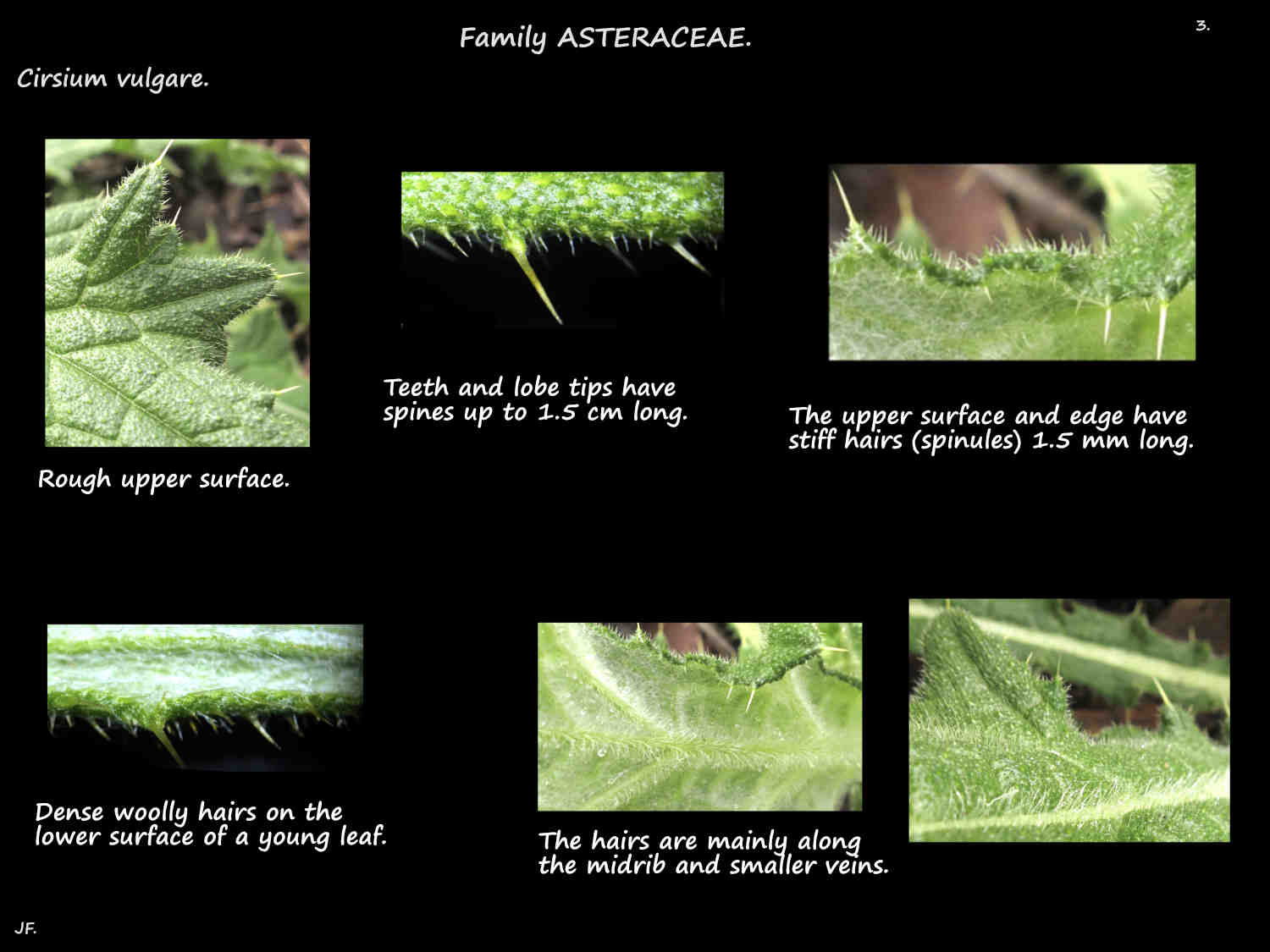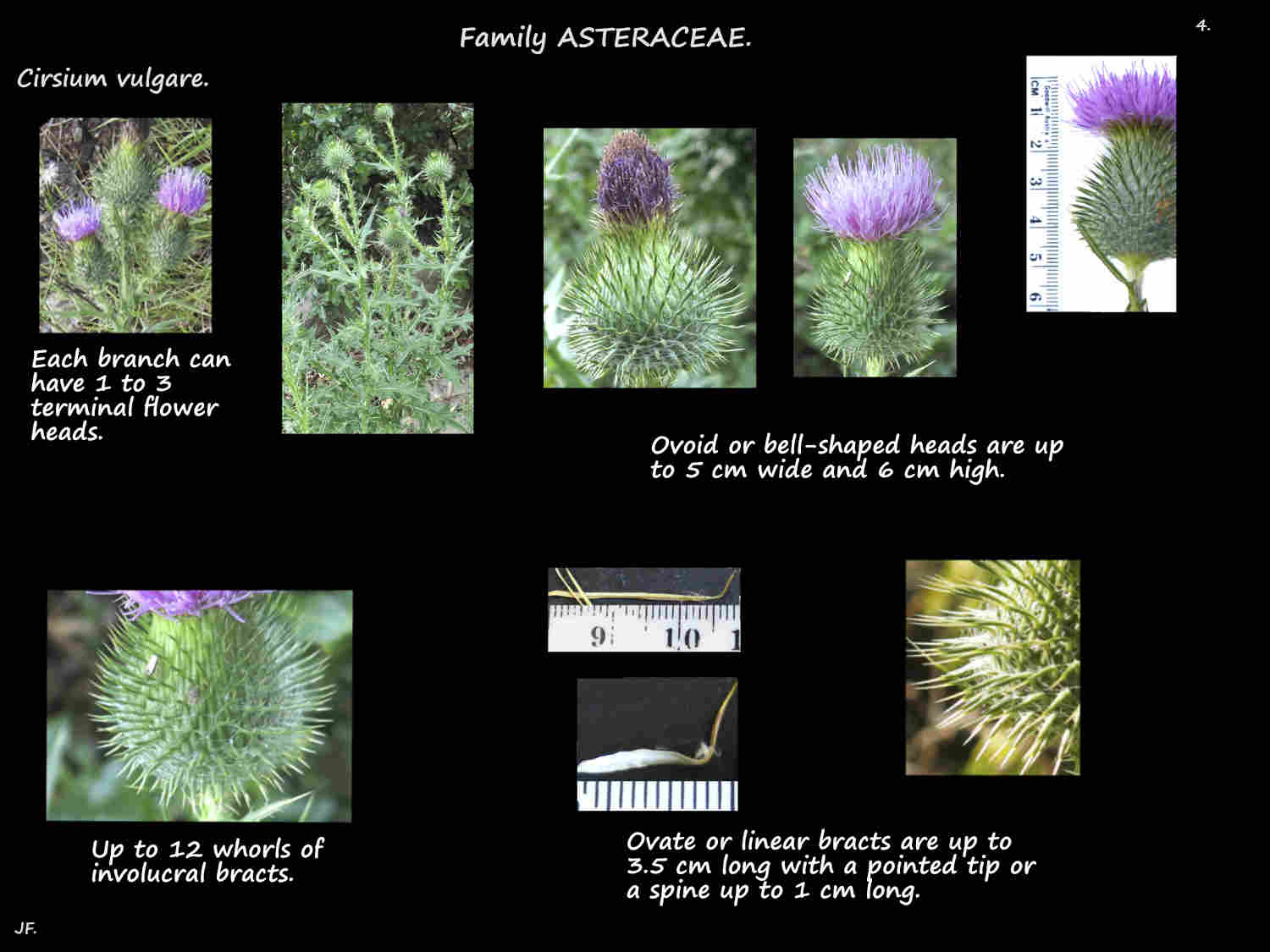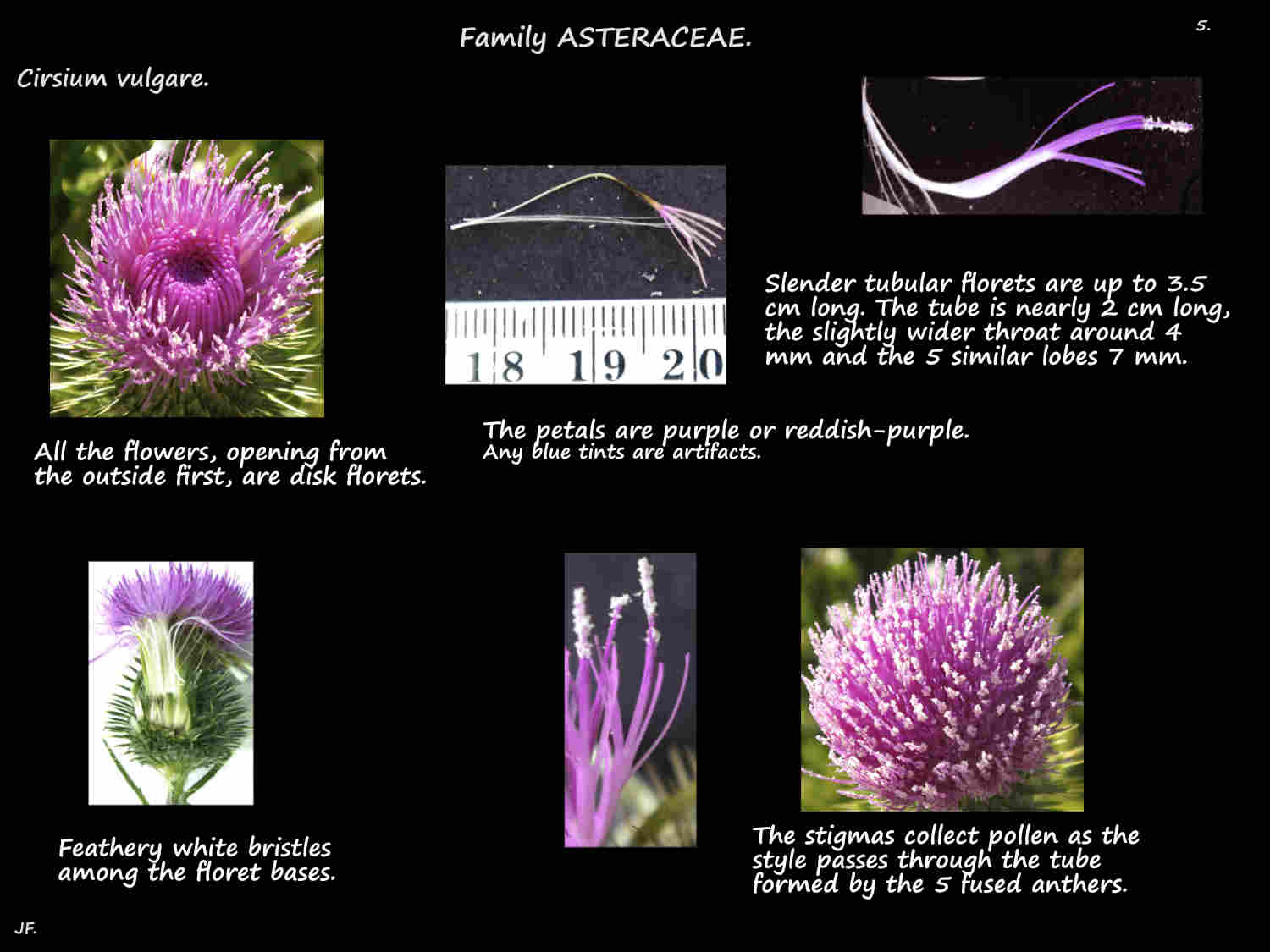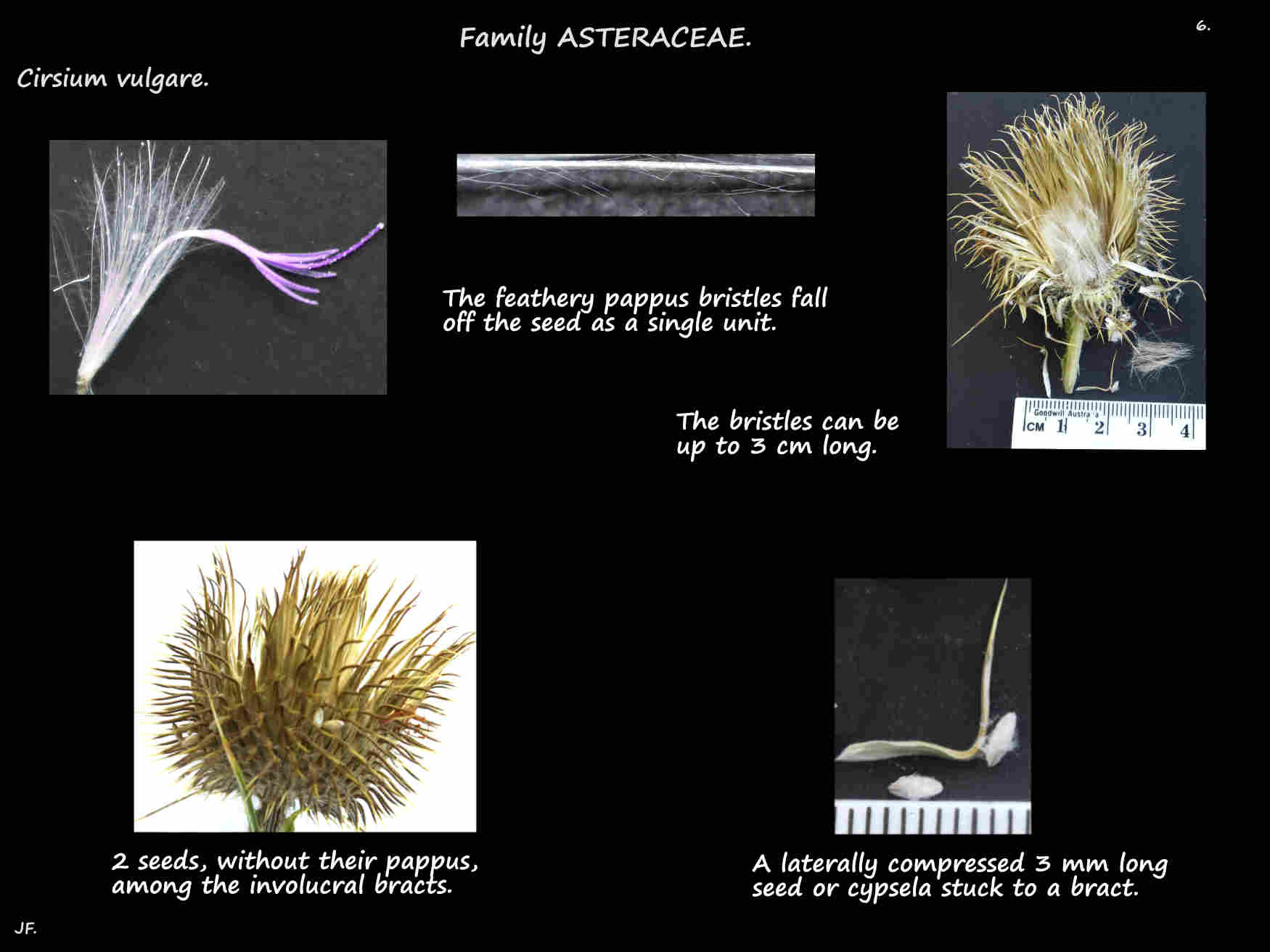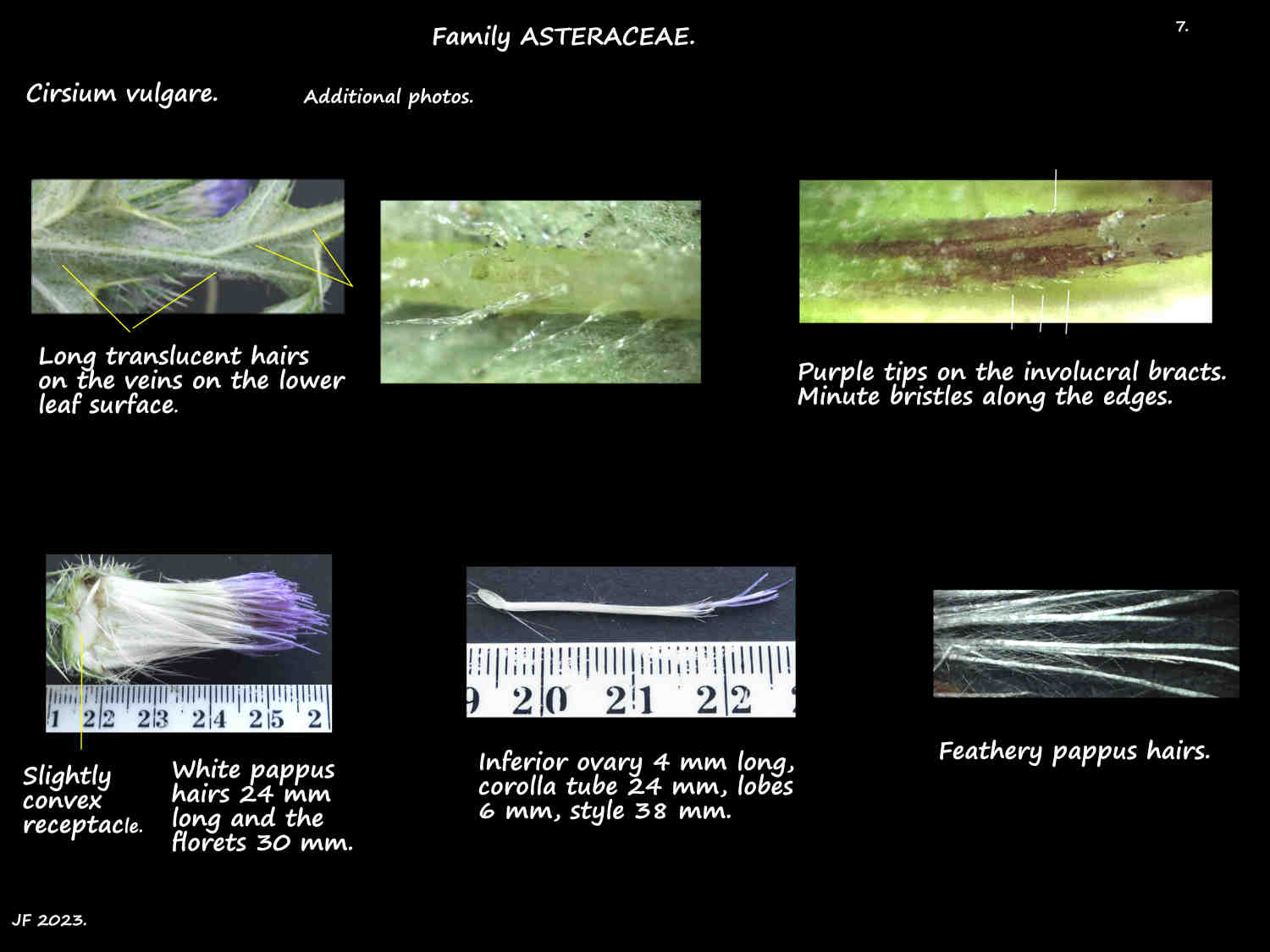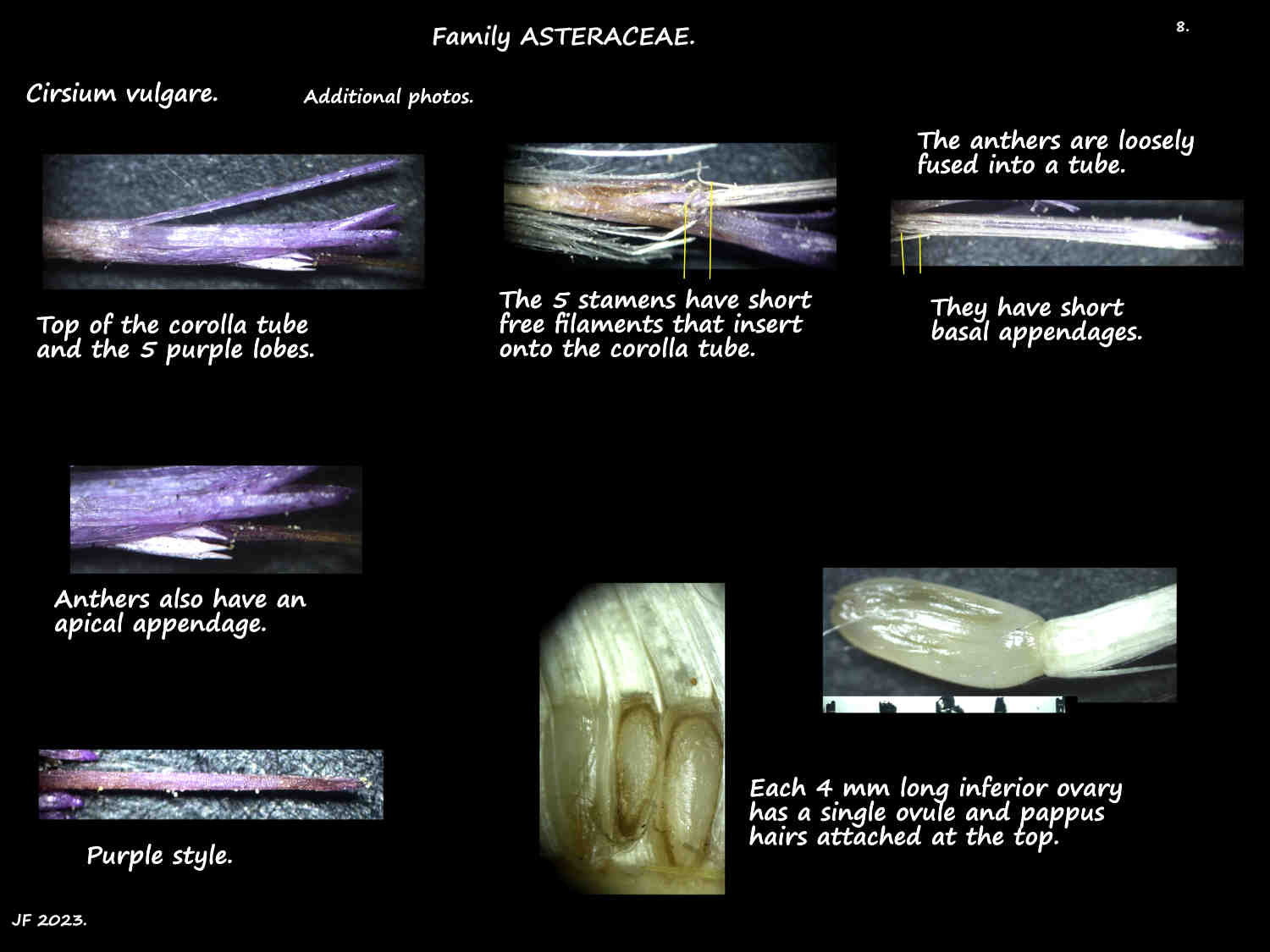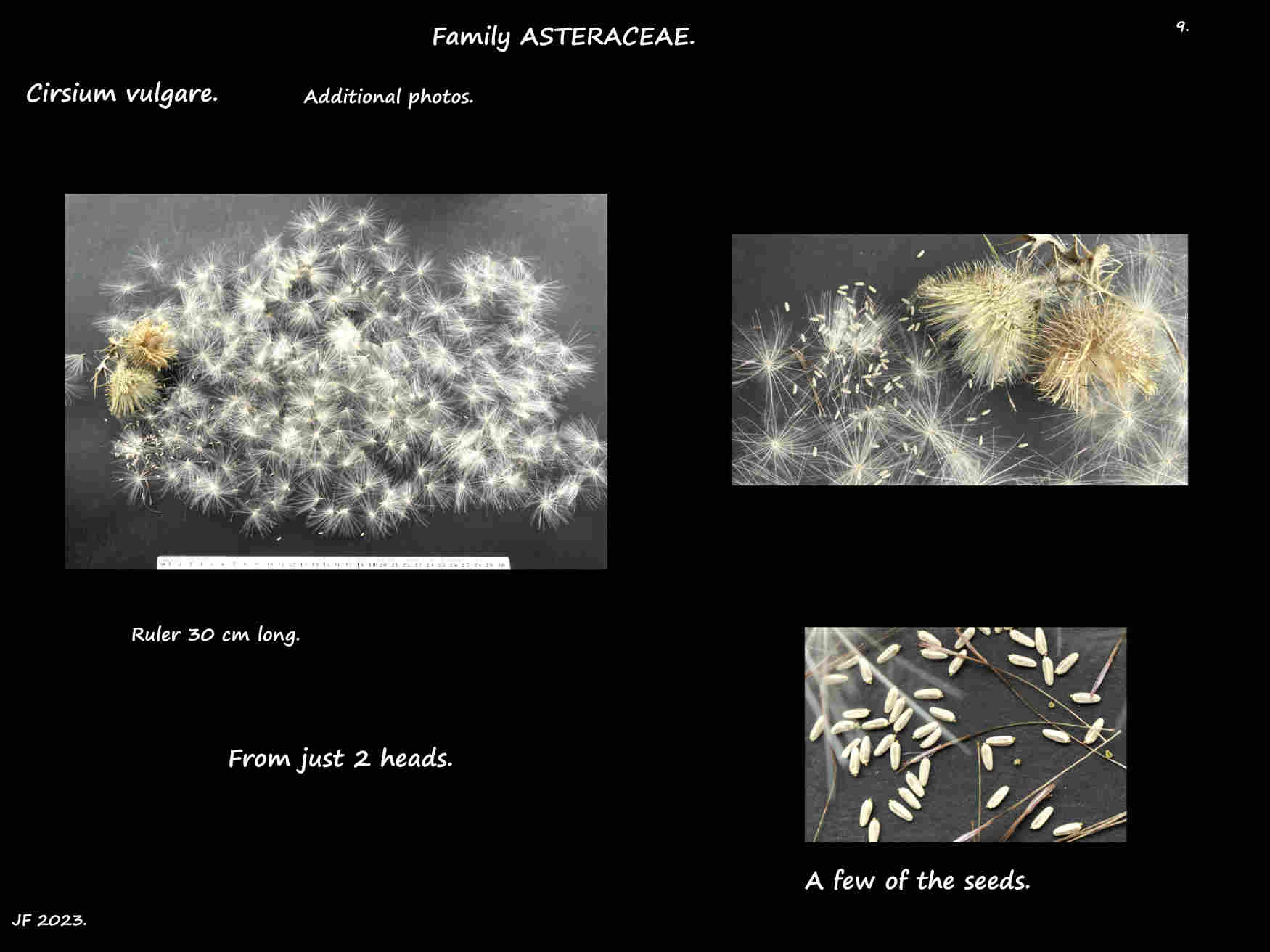Cirsium vulgare.
The Spear or Plume thistle is sometimes called Scotch thistle a name shared with other thistles.
Native from Europe to China they are widely naturalised and common in Queensland where they are a minor weed.
They are annual or more often biennial herbs with a basal rosette of leaves from a long taproot.
The 1 or more erect stems, up to 1.5 (2 or 3) m high have a few to many branches near the top.
The wings or ribs that run down the stem from the leaf bases have teeth with a long spine.
Some stems have no hairs but most have a few to dense long woolly whitish ones.
The leaves in the basal rosette are up to 30 or 45 cm long and 10 cm wide.
The alternate leaves along the stems decrease in size towards the top.
Leaves can be directly attached or have a petiole that may or may not have wings.
The lanceolate, oblanceolate to obovate leaves are toothed or more usually shallow to deeply lobed and sometimes twice divided (bipinnate).
Lobes can point to the top or base of the leaf and the upper leaves are often more deeply lobed.
Leaf edges have spinules 1.5 mm long and the tips have a spine up to 1.5 cm long.
The green to grey-green upper surface feels rough due to stiff hairs or spinules.
The grey-white lower surface has dense woolly hairs.
The erect 1 to 3 terminal flower-heads or capitula are on a peduncle up to 6 cm long.
The ovoid to bell-shaped heads are up to 5 cm across and 6 cm high.
At the base are up to 12 whorls of overlapping involucral bracts.
The outer linear to lanceolate bracts are up to 3.5 cm long and 0.5 cm wide.
Their tips have an outward curving spine up to 1 cm long.
The shorter flatter more linear inner bracts have a pointed tip.
Some or all of them may be smooth, have long soft or coarse hairs or long curly ones like wool.
Hairs may be sparse but are often dense.
The narrow bisexual tubular florets are all the same.
There are bristles forming a pappus on the top of the ovary and around the base of the corolla.
The corolla tube is up to 2.5 cm long and the 5 lobes around 1 cm.
Petals are purple sometimes with a red or pink tinge and rarely white.
The species is known for the large amount of nectar produced.
The anthers of the 5 stamens are fused into a tube.
The inferior ovary has 2 styles fused except for the around 5 mm long stigma bearing tips.
The narrow flattened brown seeds or cypselae (incorrectly called achenes) are around 5 mm long.
The feathery pappus bristles, up to 3 cm long are joined at the base and fall off together.
J.F.

